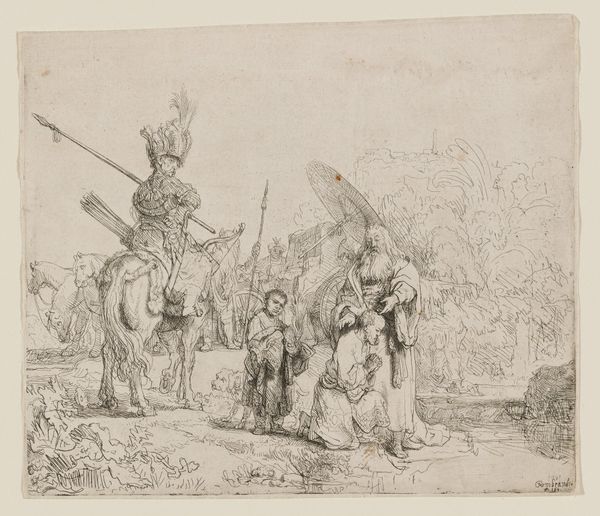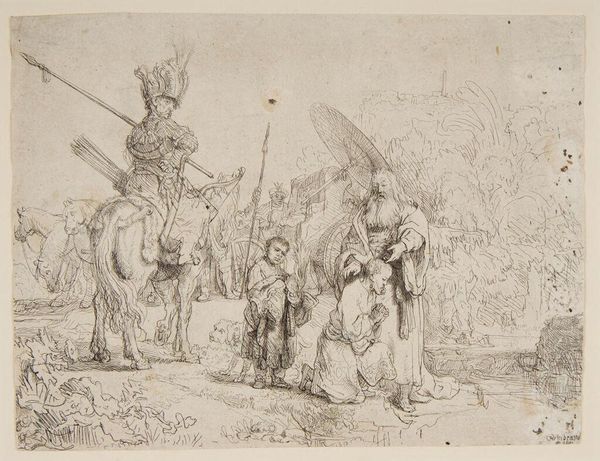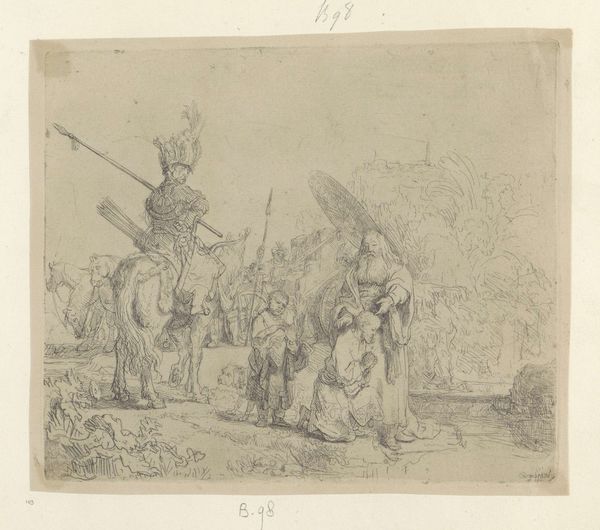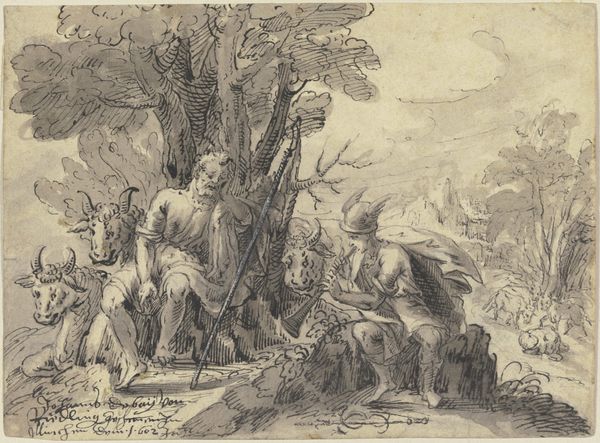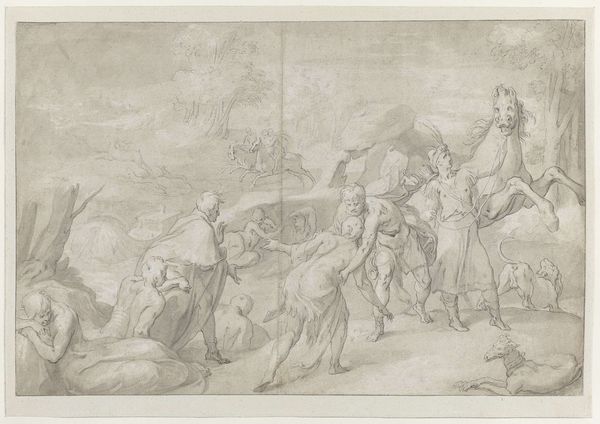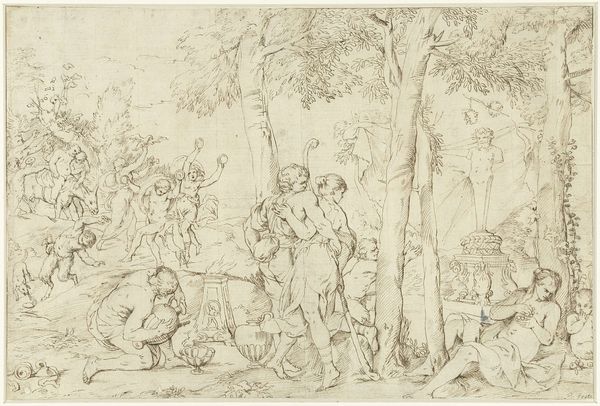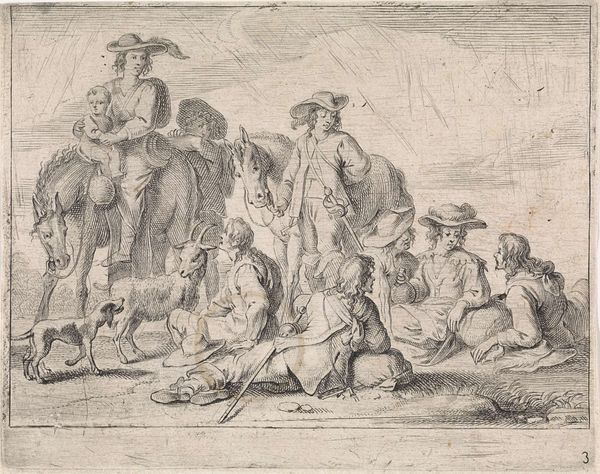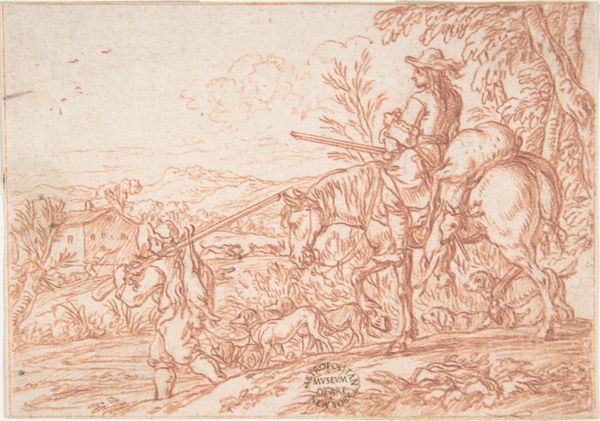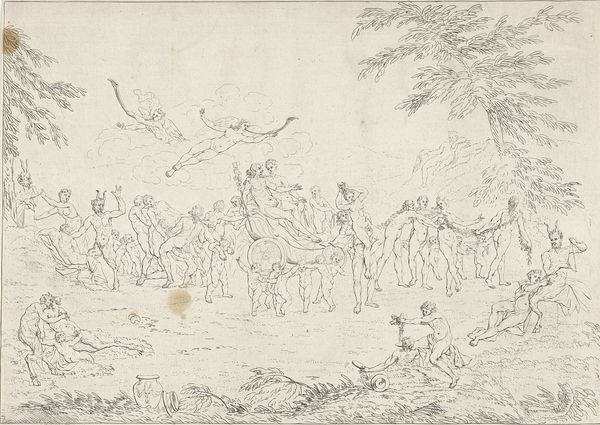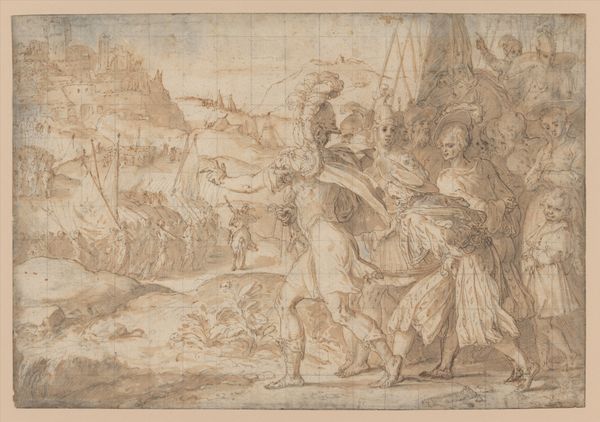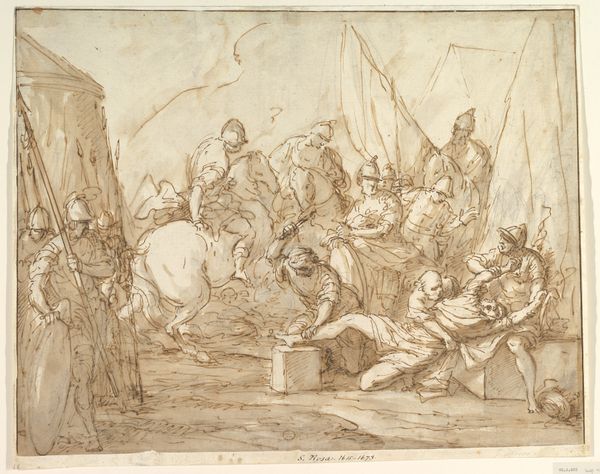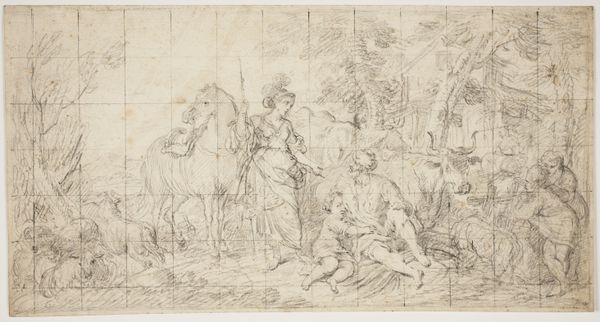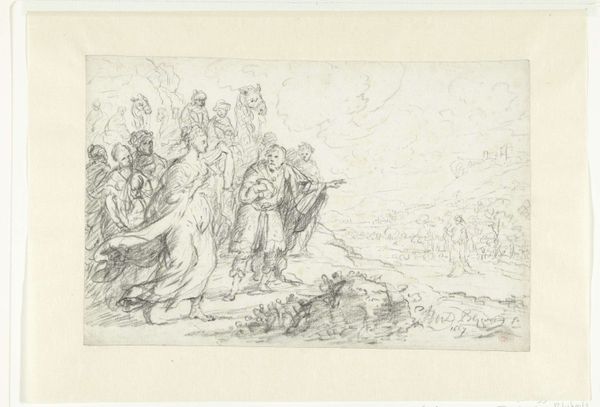
drawing, paper, ink, pencil
#
drawing
#
narrative-art
#
baroque
#
dutch-golden-age
#
figuration
#
paper
#
ink
#
pencil
#
line
#
history-painting
#
realism
Dimensions: height 178 mm, width 213 mm
Copyright: Rijks Museum: Open Domain
Curator: The sense of profound quiet captured in this drawing, Rembrandt van Rijn's "The Baptism of the Eunuch" from 1641, really strikes me. It's just pencil and ink on paper, yet so full of contained emotion. Editor: The first thing that stands out to me is how much dynamic activity and commotion Rembrandt manages to evoke with a few simple strokes. Curator: The artwork represents a key episode from the Acts of the Apostles. It depicts Philip baptizing an Ethiopian eunuch after he converted to Christianity. Its narrative-art and history-painting elements are so moving! Editor: Agreed, and structurally, the placement of figures and shading creates a real sense of depth, pulling the eye through the scene, especially if we consider that it’s made using very sparse, almost frantic strokes. Curator: It does. Rembrandt’s interpretation really highlights the universality of the Christian message, its ability to transcend geographical and cultural boundaries. In that context, the historical backdrop is extremely crucial! Editor: And there is some very precise line work at play! Look at the soft but clearly delineated features on the faces; also, Rembrandt masterfully renders different textures and materials. The fabric of the eunuch’s clothes, for instance, compared to the sleek coat of the horse… superb. Curator: Absolutely. Rembrandt made this work during the Dutch Golden Age. This period of great social change certainly left a mark on his production, opening to increasingly diverse social influences and exchanges. Editor: All true! Though when focusing on form, I can’t stop thinking about the contrast. You've got that incredibly intricate detail in the foreground juxtaposed against this blurred, suggested background. It almost gives the scene a dreamlike, ephemeral quality. Curator: Understanding the sociopolitical atmosphere in which an artist like Rembrandt operates gives a unique perspective into interpreting these pictorial components. Editor: I think we can safely say that this tiny artwork rewards extended, in-depth study, because every formal choice seems deliberate and full of meaningful implications. Curator: I'm struck, again, by its portrayal of this particular biblical event as one shaped by very human, very relatable needs and circumstances. Editor: Indeed. Looking beyond narrative considerations, there's such brilliance in Rembrandt’s compositional control and line variation.
Comments
No comments
Be the first to comment and join the conversation on the ultimate creative platform.
